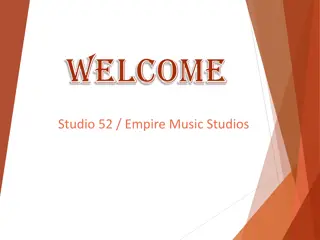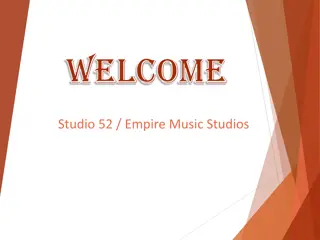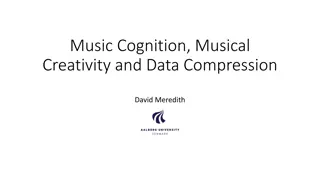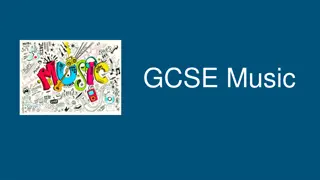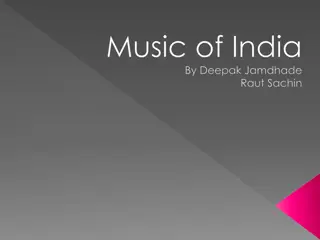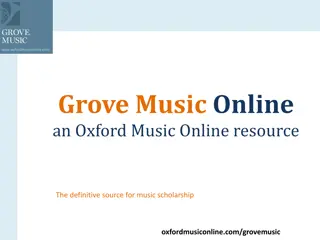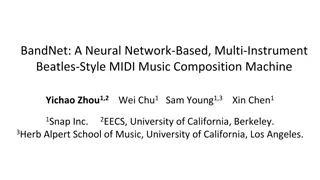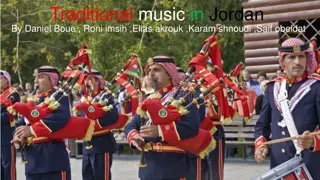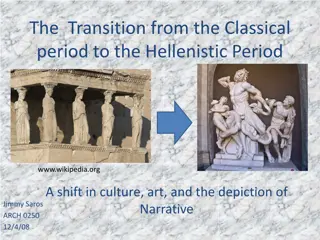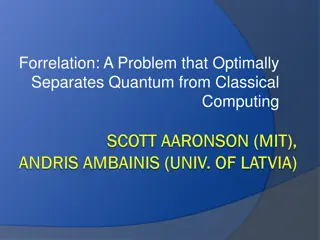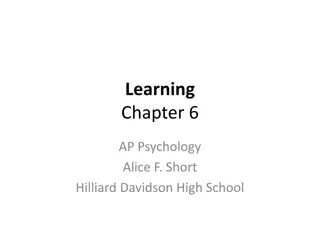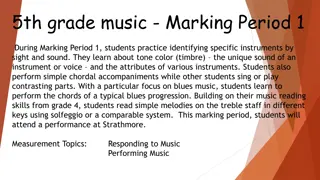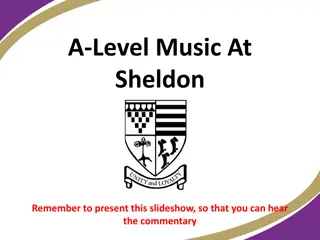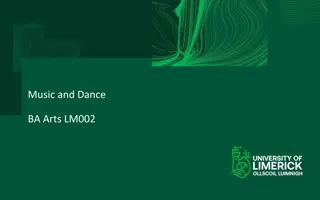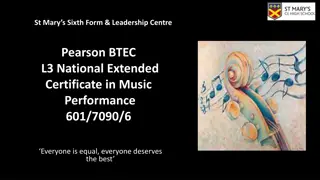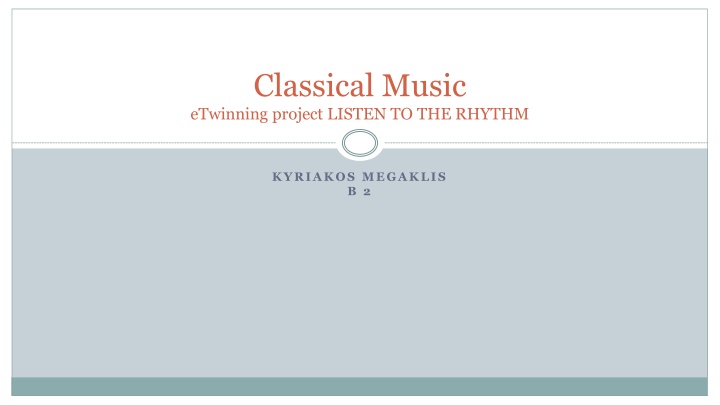
History and Evolution of Classical Music: A Journey Through Time
Explore the rich history and evolution of classical music, from its origins in Western civilization to the development of polyphony and complex harmonies. Learn about Gregorian Chant, secular music, Ars Antiqua, and the transition to Discantus in this fascinating musical journey. Discover how classical music has shaped Western culture and society over the centuries.
Download Presentation

Please find below an Image/Link to download the presentation.
The content on the website is provided AS IS for your information and personal use only. It may not be sold, licensed, or shared on other websites without obtaining consent from the author. If you encounter any issues during the download, it is possible that the publisher has removed the file from their server.
You are allowed to download the files provided on this website for personal or commercial use, subject to the condition that they are used lawfully. All files are the property of their respective owners.
The content on the website is provided AS IS for your information and personal use only. It may not be sold, licensed, or shared on other websites without obtaining consent from the author.
E N D
Presentation Transcript
Classical Music eTwinning project LISTEN TO THE RHYTHM KYRIAKOS MEGAKLIS B 2
Classical Music Classical music generally refers to the art music of the Western world, which is considered to differ from Western folk music or popular musical traditions. Classical music is often characterized by formality and complexity in its musical form and harmonic organization, particularly with the use of polyphony.
Introduction to the history of classical music By the ninth century it was primarily a written tradition, giving birth to a sophisticated system of notation, as well as accompanying literature in analytical, critical, historiographical, musicological and philosophical practices. Fundamental facts of Western civilization , classical music is often seen from the perspective of individuals or groups of composers , whose compositions, personalities and beliefs have fundamentally shaped its history.
Canto Gregoriano - Gregorian Member With its roots in the protection of churches and royal courts in Western Europe, surviving early medieval music is primarily religious, monophonic and vocal, with the music of ancient Greece and Rome influencing its thought and theory. The oldest surviving musical manuscripts date from the Carolingian Empire (800 888), around the time when the Western hymnist gradually merged into what is called the Gregorian member.
Secular music In the early Middle Ages, religious music had a monopoly on any civilizing event. With the crusades, however, the knightly class created its own art, the song of the Troubadours and Trouverians, who wrote lyrics and music. Their works were usually performed by itinerant musicians, menestrels and jugglers, who had succeeded the ancient itinerant troupes. Their works were usually romantic.
ARS ANTIQUA- Old Art The first polyphonic efforts of the Paris school from the 9th 13th centuries are called organum: from the verse of the bible praise the Lord in organs. Guido d'Arezzo, a Benedictine monk, defined the principles of the instrument and perfected the notation. The organum was an improvisation. On a Gregorian member they improvised a second melody, the contre-chant. The 2 voices begin with the same sound (unison), the upper voice rises to the interval of the 4th or even the 5th, the 2 proceed in parallel and finally return to the original sound.
Discantus The organum had no evolution, so in the 12th century a new polyphonic form, the discantus, was created. Bred in France. The 2 voice is placed above the main melody and now moves opposite rather than parallel. A particular variation of discantus is the false base. Its characteristic is parallel thirds and it was three-voiced.
ARS NOVA New Art In the 14th century, Philip de Vitry, bishop of Meaux, forbade for the first time the parallel 5th and 8th and generally sought correct rules for composition. Her greatest teacher ars nova is William de Masteau. Polyphonic forms are motet, rondo, madrigal, ballad and katsia.
Renaissance In the 15th century, musical dominance passed to the Franco-Flemish school. Counterpoint (many voices and many melodies) is developed to the highest degree. In the 16th century, next to them, the Italian school with Palestrina created music a cappella in religious art. Polyphonic vocal music without instrument accompaniment. The Adoration of the Shepherds, centre panel of the Portinari Altarpiece, by Hugo van der Goes, c. 1474 76;
Baroque music Baroque music is the music that belongs to the general artistic style called Baroque and first developed in Italy in the 17th century and spread throughout Europe. It is a complex, full, impressive rhythm, in contrast to the calm and serenity that prevailed in the Renaissance, but also organized and coded, without the tedious charge of the 15th century. Baroque art impresses, moves and stimulates the imagination with its wealth of decorations.
Classical era of music The classical era of music refers to the classical period of Western music, which began around 1750 and ended between 1810 and 1830. It was the period in which the figures of very important composers such as Joseph Haydn, Wolfgang Amadeus Mozart and Beethoven stood out. Classical music is generally characterized by a homophonic musical writing in which a basic melody dominates, while the other accompanying parts support this melody. The musical text is most often divided into short periods or phrases while the harmonies alternate at a slower pace. An additional feature of classical music is the alternation of emotions and mood.
Romantic music Music belongs to the broader intellectual movement that appeared at the end of the 18th century in Germany and spread during the first decades of the 19th to the rest of Europe. There is a tendency to release emotions that did not exist in previous eras, and artists express pain, love, joy without feeling the need to cover them. Altered chords Continuous transformations (changes of tonal centers - scales).Exuberance in melodic expression. Rich in timbres orchestrations and numerous orchestras The scores of the romantics are full of notes on the execution of the work so as not to leave much room for improvisation, while a genre that developed strongly in this period is "Program Music". He tries to depict representations or emotions using the expressive means offered by musical instruments, just as painters use colors.
https://en.wikipedia.org/wiki/Classical_music History of music Karl Nef (book) History of Music Emil W llermoz (book) Ars nova, wikipedia https://www.europeanarsnova.eu/ https://www.britannica.com/event/Renaissance https://www.musictheoryacademy.com/periods-of-music/renaissance-music/ https://cmbv.fr/en/introducing-baroque/french-baroque-music https://www.classicfm.com/discover-music/periods-genres/classical/beginners- guide-classical-era-music/ https://musiconline.co/en/blog/the-romantic-period-in-music

